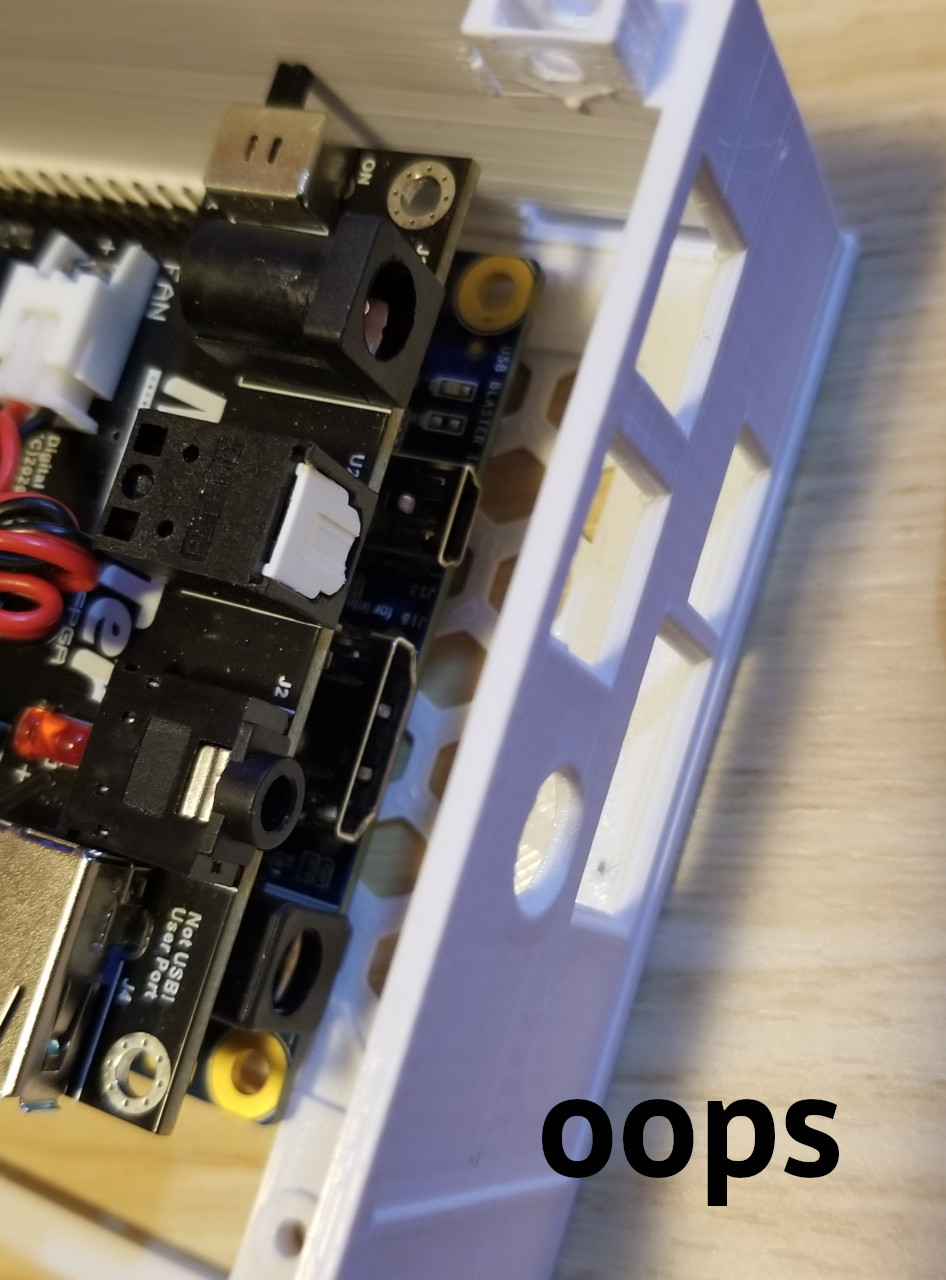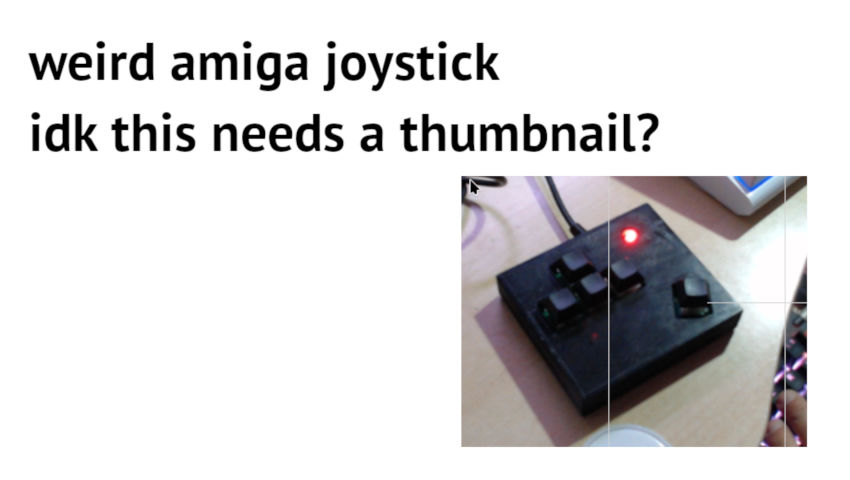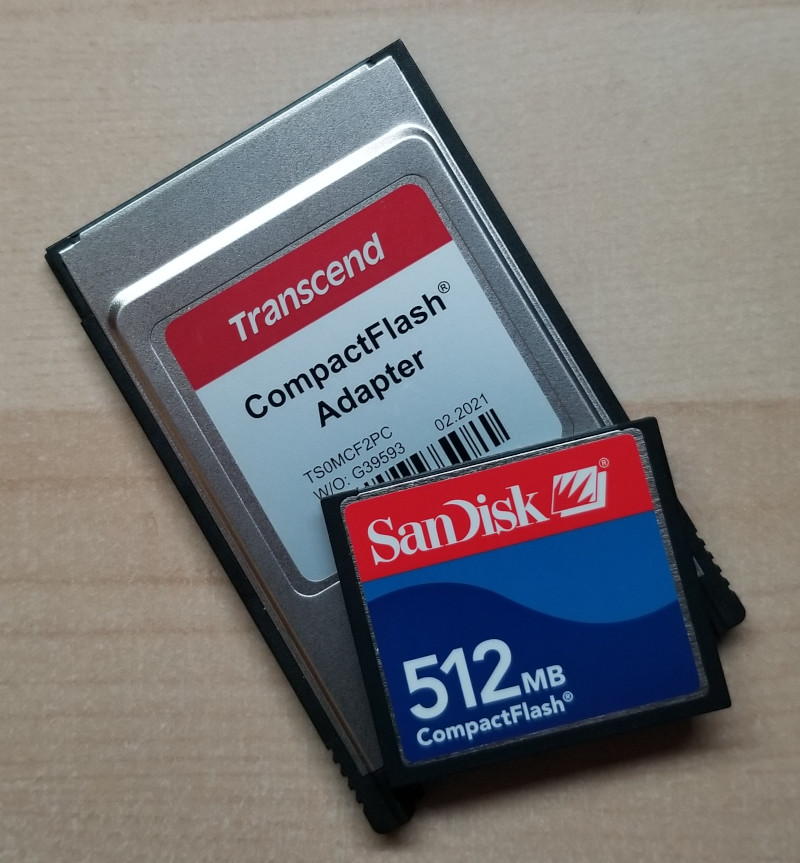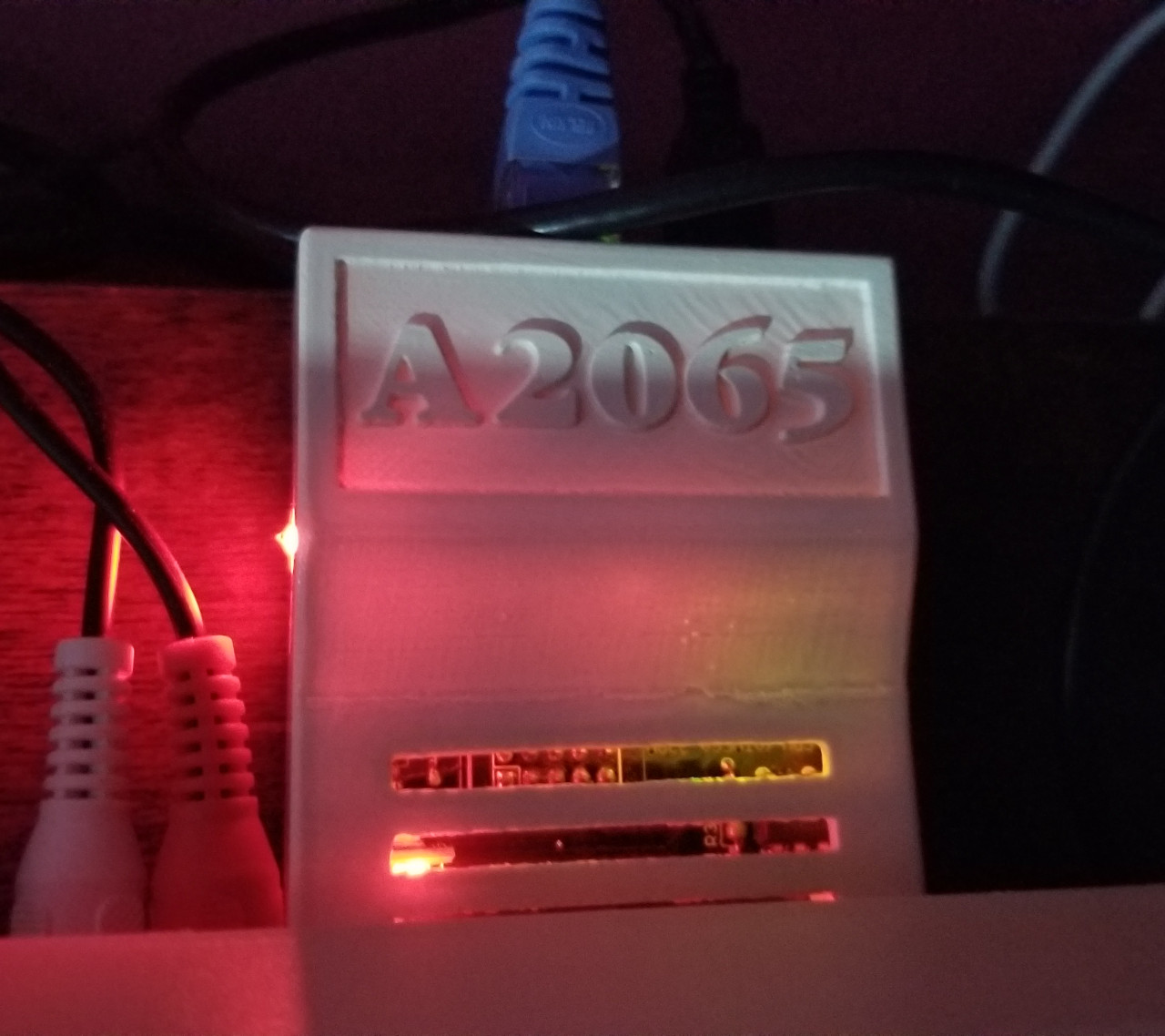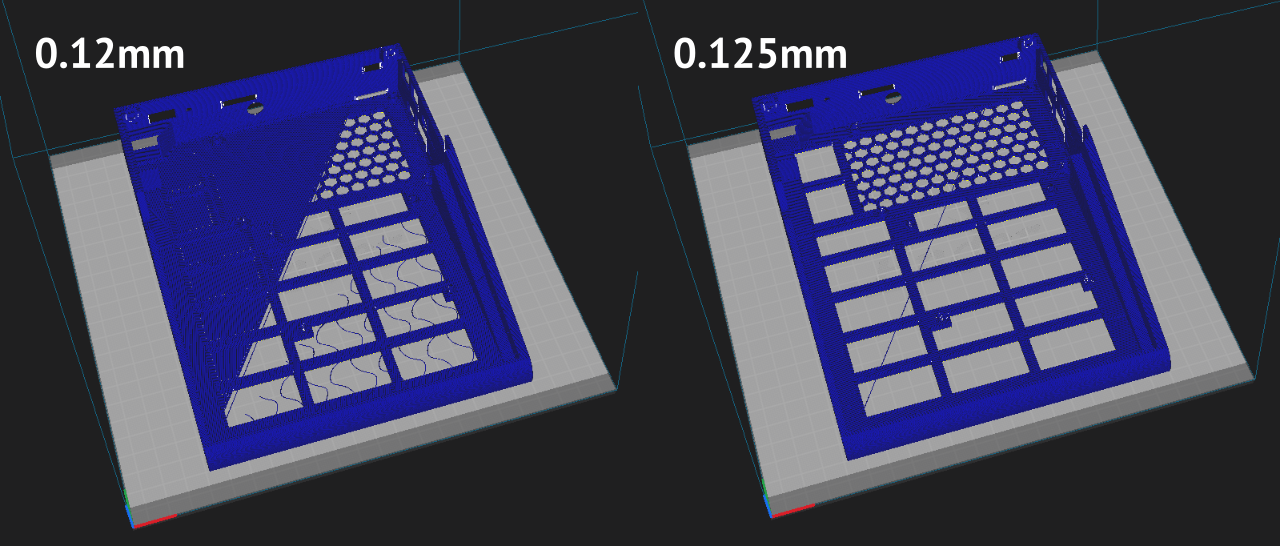Most of the parts to assemble my AjSTer arrived,
so I started on construction. I decided to
tackle the hardest part first, the soldering.
Also, depending on how the soldering came out,
I’d likely need to reprint some parts.
I got the primary parts list from
BuildingTents’ build,
but I ordered a different Micro USB header which seemed simpler to use
suggested on Reddit.
The MiSTer digital I/O board has two connectors
for external buttons and LEDs. I found a great
diagram showing how to wire up the LEDs, and
my breadboard setup and subsequent soldering
job worked out great.
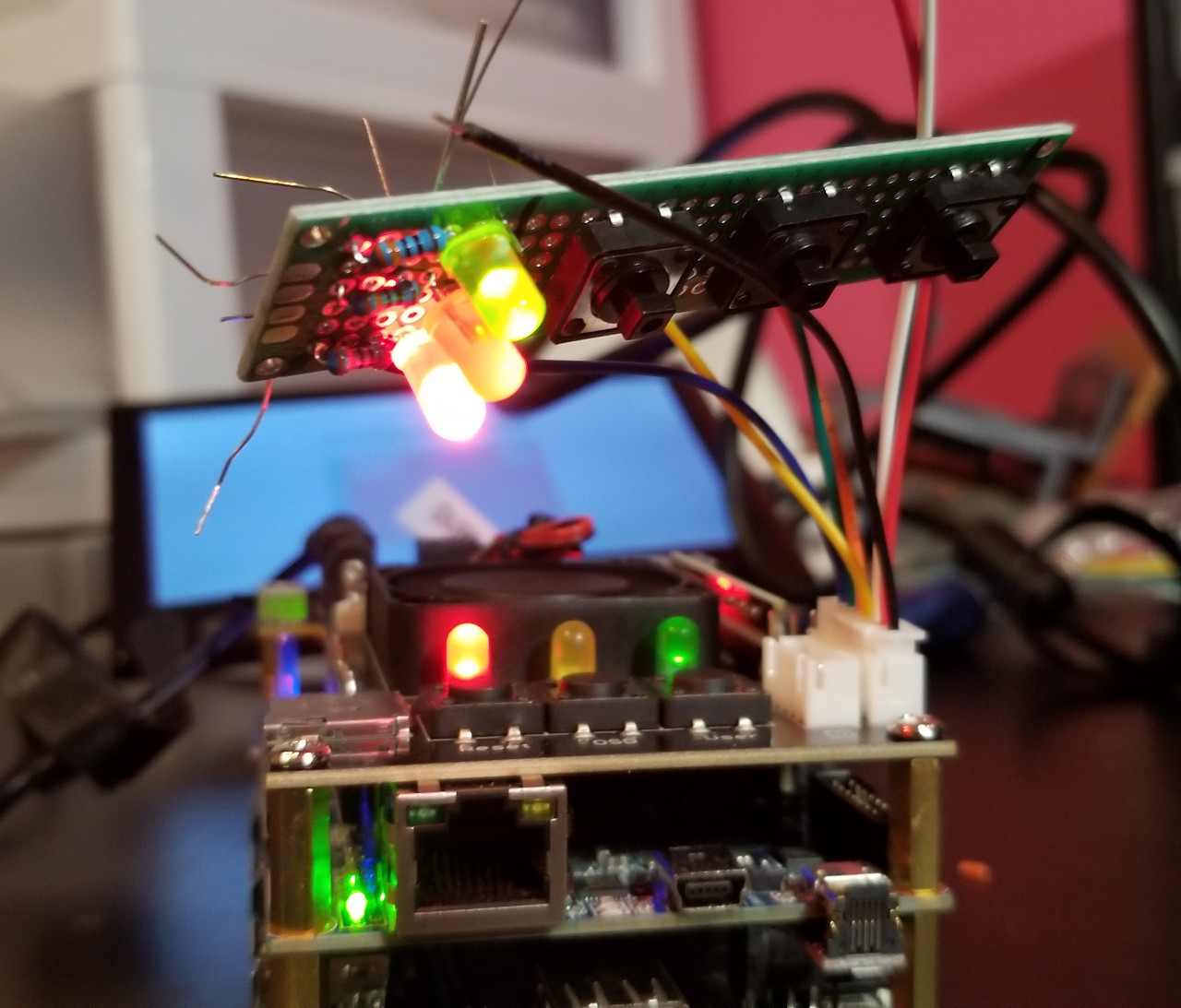
The buttons were a little more difficult and
required some experimentation. The first pin on
the Digital I/O board for the buttons seems to
be on the other side of the connector as the
LEDs, so I had to wire the buttons “backwards”.
Once I figured this out, breadboard testing, and
subsequent soldering, went smoothly.
Since the PCB I got wasn’t the same one as the
original creator used, the top right part of
the case needed to be reworked. I grabbed my
calipers and some paper and took as many measurements
as seemed to make sense to ensure:
- the board had enough clearance for the LEDs I was
using,
- the printed buttons, which I now needed to modify, would
extend down from the top of the case far enough
to hit the buttons on the PCB,
- and the PCB could be mounted securely to the case, in case
I decide to aggressiely reset the MiSTer in a fit of rage
from losing at Battletoads yet again.
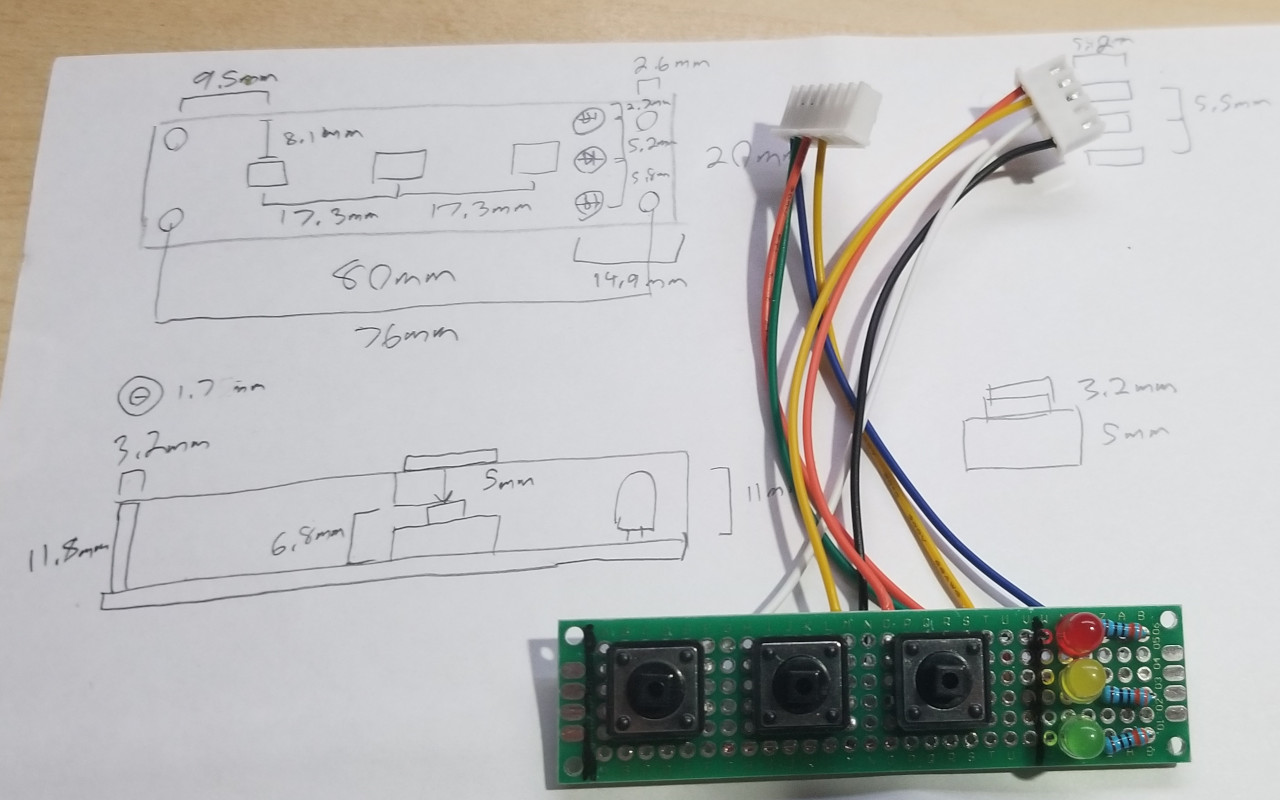
My go-to way of building most 3d models nowadays is using the
Boolean modifier in Blender. Rather than directly modifying
vertices, I’ll drag cubes and cylinders and whatever overtop
of an object and use the modifiers to make non-destructive
cuts. This was how I built the floppy disk model for the
Amiga Architecture 101 video, and it’s how I modified the
AjSTer case model.
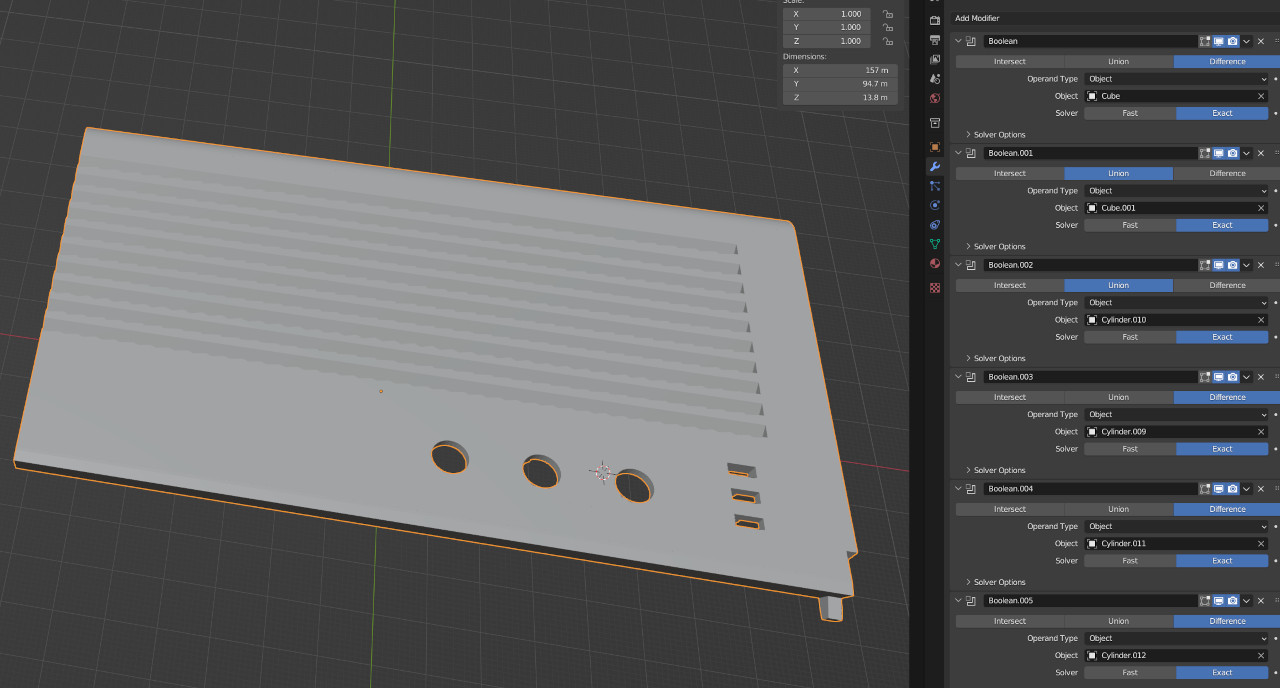
As I’m writing this, the new case part and buttons are printing
away, and I have one cable I forgot to order, a USB to headers
connector for the USB hub, arriving tomorrow. If my schedule
holds up, I can have this new case assembled sometime this weekend!
